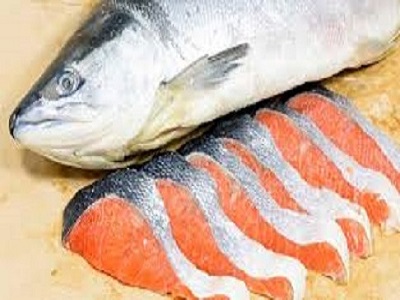
Fatty fish are the best sources of two of the three most important omega-3s (EPA and DHA). These fatty acids are considered the good fats, unlike the bad saturated fats in meat. They may deliver huge health benefits for your heart, brain, lungs, and circulation. High doses can help slow plaque buildup in your arteries and lower some types of fat in your blood. Lean fish like cod, catfish, and mahi mahi have less fat in their tissues, so they pack less fatty acids.
Here are some of the best fish to eat:
- Albacore Tuna
You should eat oily fish 1-2 times a week. A serving is about 3.5 ounces cooked, depending on your weight. Canned tuna in a sandwich or salad is a quick fix. Albacore has about 3 times as much omegas as skipjack or “light” stuff. A great fatty fish.
- Farmed Salmon
There’s a good reason why salmon is a poster star for heart-healthy fish. And those raised in fish farms have some of the highest levels of omega-3s of any seafood. Bonus: They’re usually much cheaper than wild salmon and are another great fatty fish.
- Wild Salmon
Wild salmon is still a great source of omegas. They’re an especially good pick for pregnant and nursing women because, like farmed salmon, they tend to have lower levels of mercury, PCB, and other toxins.
- Atlantic Herring
It’s often pickled in vinegar and eaten throughout Scandinavia and parts of Europe. You can also pickle the fillets in wine or cream.
- Mussels
They’re loaded with fatty acids. In fact, make mussels a top pick if you like seafood that comes in shells, not with scales. Ounce for ounce, they have way more omegas than lobster, clams, shrimp, and scallops.
- Anchovies
The Spanish marinate them with their silvery skins in oil and vinegar for a tapas called boquerones and eat them with bread and beer. Like herring, these tiny guys put up big numbers for omega-3s.
- Swordfish
Their meaty and mild meat is perfect for grilling. But you need to be careful eating swordfish. They eat smaller fish. They pick up more mercury and other pollutants from their diet. When you eat seafood with high levels of methylmercury in their tissues, it can affect your brain and your nervous system. It can be especially harmful to unborn babies and infants. Children and women who are pregnant or nursing should avoid swordfish, along with shark, tilefish, king mackerel, and marlin.
- Sardines
You can buy them fresh or in a can. Because they’re smaller and live short lives, they’ve got far less mercury built up in their flesh than larger, older fish.
We hope this information was helpful. Remember for all those minor illnesses or injuries, We at On Call Medical Clinic are here 7 days a week to help. Please visit our website at www.oncallclinic.com to learn more about all the medical services we offer as well as skin care treatments.
